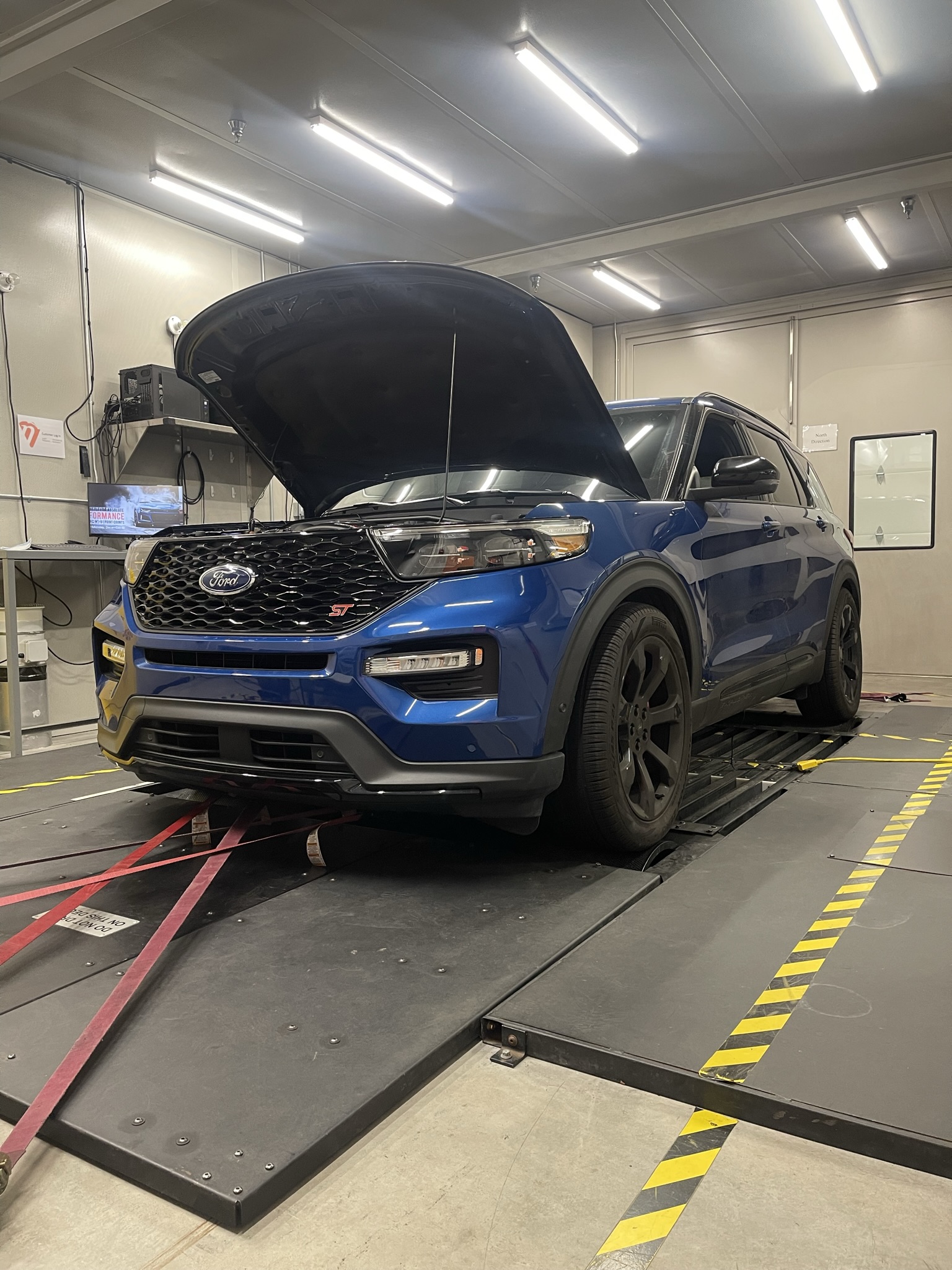Key Differentiating Features:
- Custom formed hard line for OEM-like fitment
- Fully stainless welded construction on the HPFP (zero chance of leakage)
- Injectors are a direct replacement - no adapters needed!
- OEM equivalent spray pattern
- Installation guide provided
- Tuning Guides available (dealers and tuners)
- Limited Lifetime warranty
- OEM SAE quick connect fitting (low EVAP)
Nostrum is proud to introduce our HPFP Upgrade for the 3.0 Ecoboost found in the Explorer ST! The main benefit of our HPFP is the 47% increase in flow over the stock pump, meaning you can dial in more boost earlier in the rev range and allow for a significant increase in torque. The additional fuel provided by Nostrum’s hpfp will allow you to hit peak power even sooner.
To take advantage of your now upgraded HPFP, we paired it with some bigger injectors! Our Stage 2 injectors flow an additional 27% more fuel than the stock injectors. This is where we bring those peak gains back to the table. The Stage 2's are for those taking their build to the next level with all the bolt-ons and . If you are looking to push your Ecoboost to the absolute limit, you want the Stage 3 injectors! These are intended for those with built engines, built transmissions, and big turbos!
Every Nostrum manufactured part is backed by a limited lifetime warranty. Our products are comprehensive solutions that come complete with everything you need inside the box, including detailed installation instructions. Tuning guides are also available for your dealer or tuner. We have customer service and calibration engineers on staff to provide you with any support that you may need, from installation to tuning.
Why is spray pattern important?
While increasing flow rate is critical to making more horsepower, there are other factors to consider when choosing fuel system upgrades. A bigger injector isn’t always a better injector! It can flow a large volume of fuel at WOT, but if the spray pattern is poor, you can expect poor idle quality, poor drivability, increased knock propensity, soot, NVH (noise vibration harshness,) and tuning difficulty. Additionally, the wrong spray pattern can result in liquid fuel impinging in the cylinder walls, causing oil dilution, which increases mechanical wear to internal engine components.
Nostrum has invested significant time and resources into acquiring the equipment and machinery necessary to deliver an OEM level of quality on our injectors. Our spray patternation and arc flash machines (images below) give us an unparalleled look at how an OEM injector is designed and how it operates. Our engineers design and develop injectors to optimally interact with engine air flow inside the combustion chamber to improve fuel evaporation and create a homogenous air-fuel mixture that results in a higher combustion quality. For you, this means that you can expect our injectors to perform at their absolute best regardless of what you are asking from them, from daily driver duty to setting new ¼ mile records.


Vehicle application list:
- 2020+ Ford Explorer (ST and Platinum trims)
- 2020+ Lincoln Aviator
Recommended tuners:
Dyno graph sponsorship results:
Corey’s 2022 Explorer ST (FBO, NHP Stage 2 Fuel Bundle, CRP Stage 5 Hybrid Turbos) 614whp 616wtq on E60


*Horsepower and Torque numbers are approximate and can vary significantly depending on numerous factors including what supporting upgrades are done to the vehicle, ambient temperature, elevation, road surface, tire selection & condition, fuel octane and quality, vehicle weight, and more. The advertised numbers herein are based on optimal conditions and utilizing proper supporting modifications. Your results may vary.
Frequently ask questions:
Q: Why do your numbers say I will make less horsepower on E85 than 93 octane?
A: Great question! The numbers we list in the product descriptions are similar to the numbers a turbo charger lists for air flow. The numbers are the "fuel system capacity to generate power" regardless of the other engine system limitations (air handling, mechanical limitations, knock propensity). Essentially the numbers are calculated assuming "sufficiently large air flow", "sufficiently capable mechanical assemblies" and disregarding knock limits. The equation uses actual observed engine volumetric efficiency (when available from sponsorship vehicles) and fuel capacity (including target pressures) to calculate power. Gasoline has more energy per mass volume than E85. So the higher fuel flow capacity will mathematically generate higher power potential for a gasoline than a high ethanol content fuel. The other variables (air flow, spark, rotating assembly strength, charge cooling, mechanical assembly strength) are highly variable from build to build. This is why we state horsepower capacity for the fuel system – representing the potential of the fuel system if you have all the other aspects of your build addressed!
Q: Why don't I see horsepower gains with just a pump?
A: Fundamentally we have to look at the entire fueling system and "where" in the rpm range the limits are. DI fuel systems in stock trim are often pump limited at middle rpm (peak torque) and injector limited at high rpm (peak power). This is due to engine speed. HPFPs are mechanically driven pumps (driven by the camshaft pump lobe spinning at ½ crank speed) and are RPM (engine speed) dependent. Many of the quoted flow increases in the aftermarket are purely displacement based comparisons: where by example the big bore pump has a piston diameter X% larger than the "stock" pump or the swept displacement ((3.14*(radius)^2)*(stroke))of the pump Y% larger than the stock pump. The larger displacement of the pump really shines in low rpm, where the fuel injector has plenty of time (crank angle degrees) to inject fuel. As the engines starts to approach peak power the engine speed starts to become quite short and is limiting the injection duration (crank angle degrees) for the injection event (which is another reason why we like to increase fuel pressure up high!).























